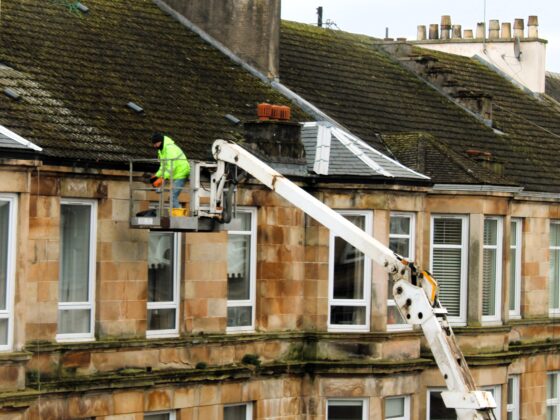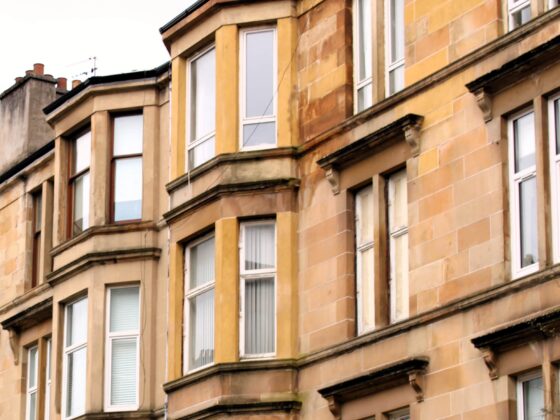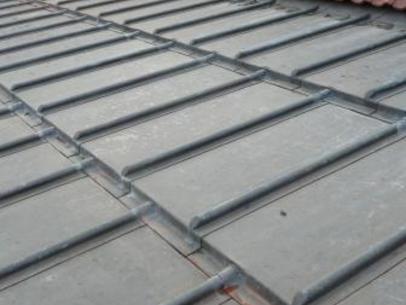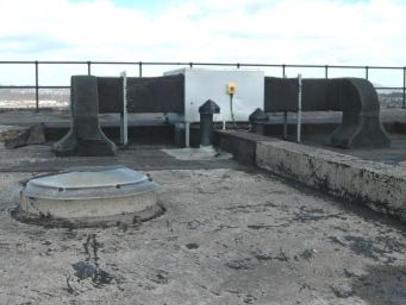Laid correctly, lead can last over 100 years. Unlike other materials, it can be shaped and joints can be welded. Because of these advantages, lead is widely used for flat roofs, roofs over oriel, bay or dormer windows, ridges, gutters, and flashings.
Lead in use
 Lead flat roof. Laid in stepped sections or bays to allow for expansion, all joined by raised rolls. Image courtesy of Greyfriars Roofing.
Lead flat roof. Laid in stepped sections or bays to allow for expansion, all joined by raised rolls. Image courtesy of Greyfriars Roofing.
 Lead flashings. Used here to make a long lasting complicated junction.
Lead flashings. Used here to make a long lasting complicated junction.
 Lead worked to cover a skylight. A good long-lasting repair.
Lead worked to cover a skylight. A good long-lasting repair.
Typical problems
Lead can become damaged through:
- general old age
- cracking from being laid in such a way that the metal cannot move as it expands and contracts as temperature changes
- foot damage causing sharp debris to pierce the lead
- corrosion pinholes caused by acid run off from algae, moss and some types of wood
- condensation dampness due to poor ventilation under the lead (an increasing problem as we keep our homes warmer)
Water penetration can also occur if there are:
- inadequate overlaps at lead joints or joints are poorly made
- puddles caused by inadequate falls (slopes) on roofs and large gutters
 Temporary flashband repair. May last long enough for you to commission a proper repair. Image courtesy of Historic Environment Scotland.
Temporary flashband repair. May last long enough for you to commission a proper repair. Image courtesy of Historic Environment Scotland.
 Defective flashing. If lead is overworked, it can thin so much that it will crack and open up. Image courtesy of Historic Environment Scotland.
Defective flashing. If lead is overworked, it can thin so much that it will crack and open up. Image courtesy of Historic Environment Scotland.
Getting the best lead repair
Lead must be laid and formed correctly, so if you are carrying out repairs:
- try to ensure the company is a member of the Lead Contractors Association
- check if individual leadworkers carry a CSCS (Construction Skills Certification Scheme) with a blue craft skill card for ‘Roofer-Specialist Leadworker’
Specifically, check:
- sheets are not too long for the purpose
- sufficient overlaps are left at joints
- correct weight of lead is used for the purpose
- appropriate types of joint used for the purpose
- adequate ventilation is used under the lead, with ventilation gaps left in sarking boards underneath
- lead is laid with the right falls to rainwater outlets
- lead sheet can move (e.g. if it is not fastened all the way along its length)
- fixed with copper or stainless steel nails and with copper, lead, or stainless steel clips
- patination oil is used to coat the lead and prevent staining on slates, tiles, or brickwork below
- use of building paper between lead and sarking to allow lead to move
White marks on lead are lead carbonate which is poisonous. It is your duty to make sure you use a contractor who is properly equipped and experienced to handle such dangerous materials.
 Defective leadwork on flat roof. Patch repairs are an attempt to cover cracks. Note ineadequate height of steps and overlaps.
Defective leadwork on flat roof. Patch repairs are an attempt to cover cracks. Note ineadequate height of steps and overlaps.
Lead thicknesses
Lead thickness is expressed as a code, the higher the number, the heavier the lead. Generally speaking, the larger the area to be covered, the heavier the lead to be used.
- Code 4 and 5 lead can be used on flashings
- Code 6, 7 and 8 is commonly used on flat roofs
- Use at least Code 6 for gutters (Code 7 or 8 on longer and wider valleys)
Alternatives to lead
For flashings
- zinc, copper, and other metals – zinc can also be welded but is less easy to shape than lead – can last at least 30 years
- bitumen felt compounds (‘Nuralite’) have lasted for over 30 years, however, they do become brittle with age
- mortar fillets may be used for skew flashings, but are prone to cracking
- polymer-based materials may be used for flashings – a variety of trade products are available with life lengths from 20-30 years, but some of them are nearly as expensive as lead
For flat roofs
- rubber or polymer-based ‘single membrane‘ roofs can last 25-50 years
- liquid applied resins have a life of 25 years, and the resin can be reapplied, extending the life of the roof to up to 50 years
- zinc and other metals can be used on roofs with a very gentle slope
- bitumen felt can last 10-20 years
- asphalt can last up to 60 years
Lead theft
Where there is a risk of theft of lead, you can also consider getting the lead marked with ‘SmartWater‘.
If you are in a listed building or conservation area, you will need consent to replace lead with these materials.
Further information




